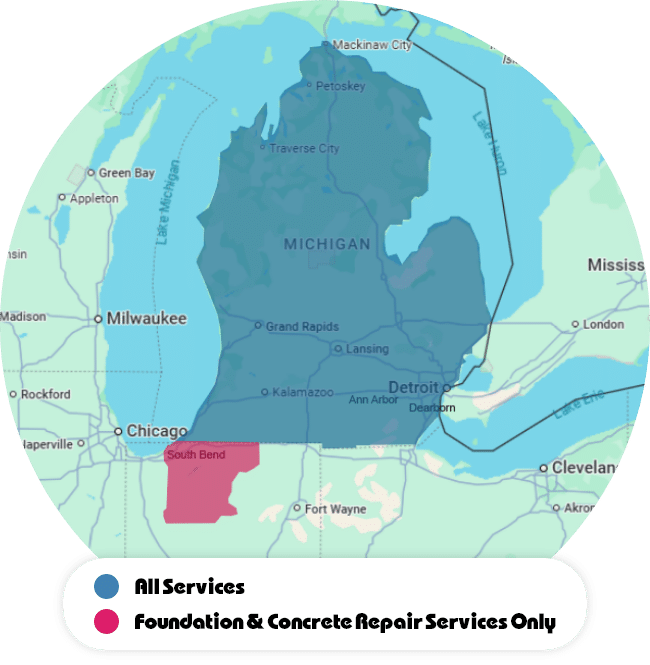Interior vs. Exterior Waterproofing

With rain in the forecast, you might be getting a lot of mixed messages on how best to keep it out of your basement. One of the biggest arguments has to do with installing an interior vs. exterior drainage system. Let’s talk about the differences.
Exterior
Now, the idea of an exterior drainage system seems solid; it would be great to catch infringing water and drain it away from your home before it had a chance to enter through the walls. Contractors who recommend exterior systems generally use one of three methods.
-
Grading: Some contractors will simply recommend changing the grading of your yard in order to divert water, and they’ll call it a drainage system. While we also recommend adjusting the grading if it’s part of the problem, that’s just it - it’s only part of the problem. Changing the grading of your yard does nothing to combat soil saturation, which is what leads to water coming through your basement.
Now, for the two that are actually drainage systems but have one huge problem in common that we’ll talk about after.
-
French Drain: If you’re familiar with our work, you know that we use a french drain system, but in this case we’re talking about an exterior one. The contractor who recommends this will dig a trench that, like above, grades away from your home, and install essentially a perforated drain pipe. The trench is then filled with a porous material like gravel so water can flow down into the drain system and away from your home.
-
Footing Drain: This is the same drain pipe as the French Drain system, but it’s installed all the way down at the footing of the foundation, then filled with gravel in a similar way.
What’s the problem with those last two? Well, the trench is filled with gravel so water can flow down - that’s fine. But dirt and debris can also flow right down with the water, especially given all of the loose soil around this newly excavated trench, and this will quickly clog the drain pipe. Which is buried multiple feet underground, under piles of gravel.
What this leads to is a quickly useless system - you pay a bunch of money to have a system installed that may work for a week or two but then clogs. And even those first few weeks can be dicey - you can only drain into soil for so long before it’s oversaturated and you’re back at square one. On top of all of this, it’s difficult to get to the drain system to clean it out. So you’re left with the same problem, and also new problems.
Interior
Instead of causing problems, the interior drain system provides solutions and is what we recommend with our WaterGuard system. While it’s true that the water does have to move through your foundation walls first (which is what exterior drains claim to prevent), as soon as it does it immediately enters the perimeter drain system. The french drain - WaterGuard - is installed below the floor but above the footing, which prevents it from getting clogged. And since it’s simply below a layer of concrete - not 10 feet of gravel - it’s easy to install inspection ports that allow for quick inspection and maintenance as needed.
In addition to a clog-free, easy access setup, WaterGuard connects into a powerful sump pump that actively discharges the water outside. We don’t rely on the soil absorbing it, or gravity being kind - we install discharge lines from the sump pump and to the outside of the house, working with the grading rather than trying to change it. Discharge lines can be extended as far as is necessary on your property to ensure water flows away and because of patented accessories we can only prevent lines from backing up in the event of winter freezing, and bury the lines for convenience while still allowing swift discharge above ground.
What would you rather have? An exterior system that, while it claims to prevent water from entering your home altogether, also has a short shelf life as it clogs quickly and is difficult to repair? Or an interior system that allows water to enter in a controlled manner and swiftly, proactively discharges it while working with the existing layout of your home and yard? The choice seems simple. Call today to schedule your inspection and find out what WaterGuard can do for you.









